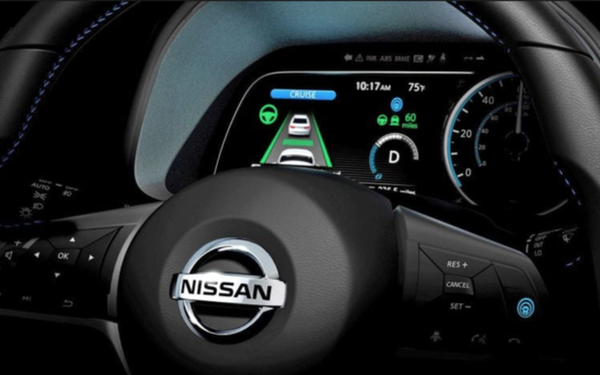
This post was previously published in an earlier edition of Drive Time.
Aside from politics, it’s hard to find a subject more divisive than self-driving vehicles.
But what many consumers don’t understand is that if they own a car that was manufactured in the last few years, it already has features that are key components of the future generations of
intelligent cars. These features aim to improve safety and convenience, as well as reduce driver errors.
Adaptive cruise control is one such feature. It has replaced traditional cruise
control on many models. The system automatically adjusts the vehicle speed to maintain a safe distance from vehicles ahead based on information from sensors. Once a vehicle moves out of the way or the
driver passes it, the cruise control resumes the originally set speed.
advertisement
advertisement
The Insurance Institute for Highway Safety created a short video back in 2012 explaining how adaptive cruise works. In my opinion, it’s a complete godsend in stop and go traffic. I don’t have to worry
about rear-ending the car in front of me if it suddenly comes to a stop, or getting rear-ended by the driver behind me.
I recently drove several vehicles in an effort to compare safety
systems. The 2019 Subaru Forester system is called Eyesight Drive Assist Technology, while the 2019 Lexus UX 250h F Sport is part of the Lexus Safety System +, which includes
“all-speed dynamic radar cruise control.” The 2019 Nissan Kicks I recently took for a spin didn’t have the feature, but I previously test drove a Rogue with Nissan’s ProPilot
system, which does include it.
And here lies one of the problems. As of 2019, the system is called by 20 different names. Everyone wants to market their own unique system, which is
understandable. But creating different names for something that consumers are only vaguely familiar with is not helping to improve awareness.
I took a poll of Facebook friends in which I asked
for a simple “yes” or “no” on whether they knew what adaptive cruise control was. I disqualified friends who are automotive journalists or employed by any automaker.
I
was astounded to find that 83 friends answered “no,” compared to 47 who answered “yes.” Of the 83 “no” friends, many are well-educated and include doctors, lawyers,
non-automotive journalists and public relations executives.
If you extend these stats to the general population, it's safe to say automakers are missing the boat on educating consumers why
they should want to buy or lease a vehicle with new technology.
J.D. Power recently found that more people are having issues with their advanced driver assistance systems, which are critical
for building consumer trust in future automated vehicles.
“Having issues” is a fairly broad category. It could be as simple as consumers not understanding what’s so good
about advanced driver assistance systems and being resistant to change.
One such consumer is a friend of mine, a 43-year-old veterinarian, who has very strong feelings about adaptive cruise
control. She told me in great detail how she “[expletive] hates” the feature on her new Subaru and wishes she could turn it off.
“‘I’ should be driving my
car, ‘I’ should be smarter than my car,” she says. “It will NOT allow you to get near the car ahead of you. And, even if you set it to 80 mph, you can ONLY GO AS FAST AS THE
CAR IN FRONT OF YOU. Even if I PRESS THE GAS to FORCE the car to go faster, the internal car brakes are trying to balance me the ENTIRE time.
"While you can 'pace' your car
‘closer,' about the closest you can get is four car lengths away! Guess what that means when I’m cruising I-75 for 10 hours…some other [expletive] can merge into that
four-car-distance spot and slow me down even more!”
Another friend, a 29-year-old who works in historic preservation, rented a Kia Soul and encountered adaptive cruise for the first time
completely by accident.
“I drove the vehicle 800+ miles for a work trip,” she says. “I was taken off-guard by the adaptive cruise control, because it was my first time
in a vehicle with it. At first I thought there was something wrong with the car!
"I quickly realized that cruise control has gotten a lot smarter. It took a bit getting used to, but overall I
thought it was a nice safety feature. I'll happily have the car tell me that it thinks I'm at risk of being a tailgater or that it thinks x-distance is a safer distance for stopping.”
Even though she liked it, the fact that she didn't know what it is, indicates a huge fail for automakers.
Lincoln tries in its “Ultimate Control” spot to explain the technology in simple and visual terms using a pool table. Other automakers should take a page from Lincoln and get back to the basics
of selling a vehicle’s features in a way that’s both educational and compelling.